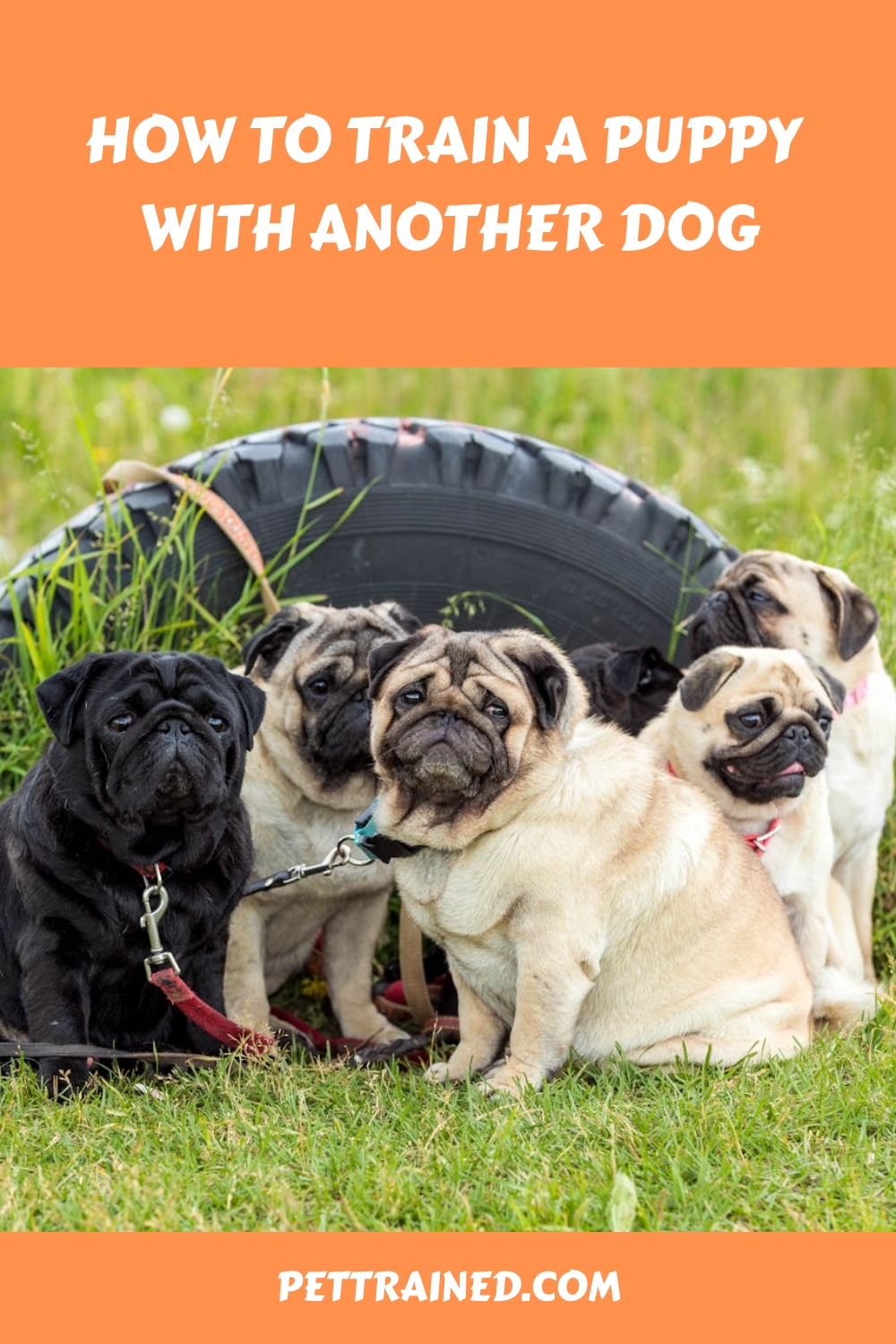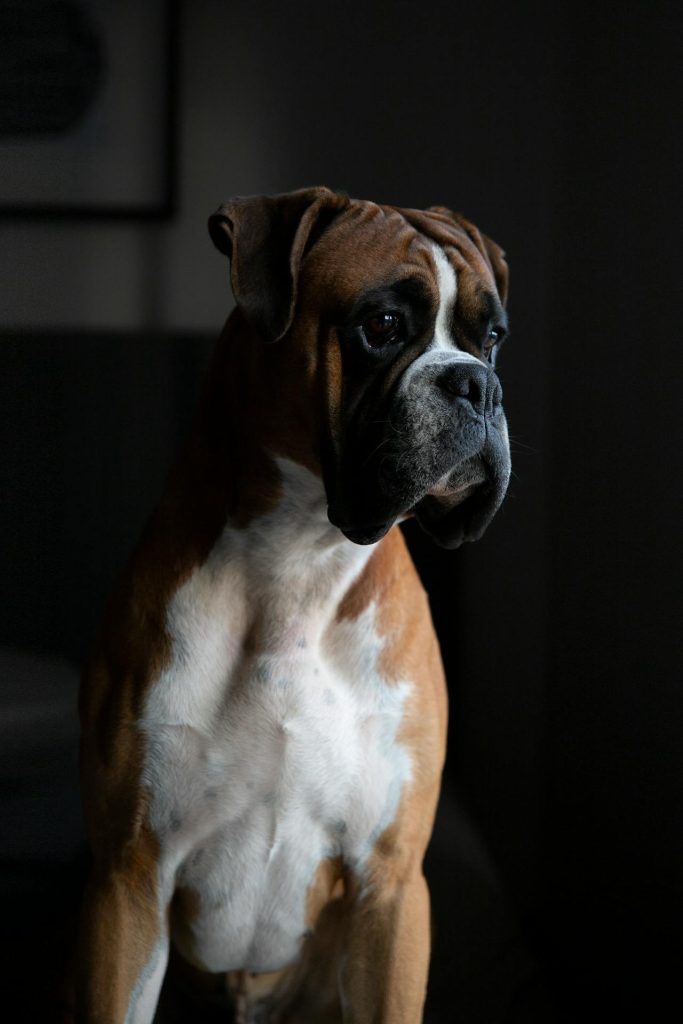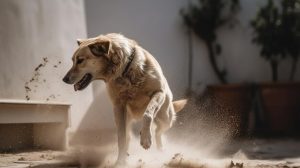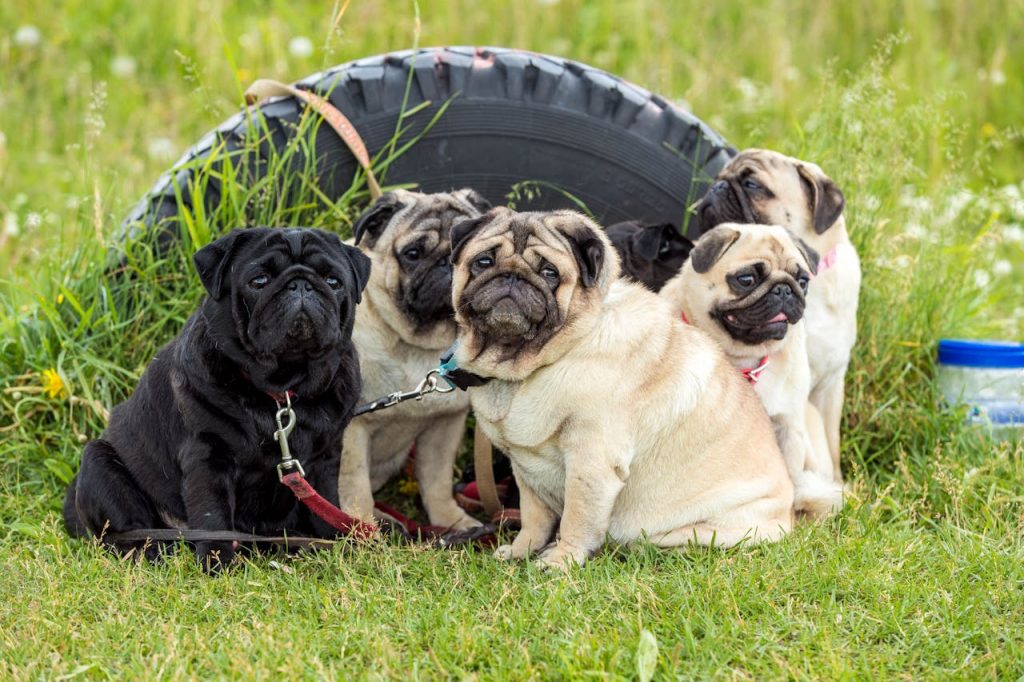
To train a puppy with an older dog, start by evaluating the older dog’s behavior to understand their tolerance and interaction style. Establish a consistent routine to provide structure.
Use positive reinforcement like clicker training and treats to encourage desired behaviors from both dogs. Separate feeding areas to prevent resource guarding, and supervise initial mealtimes.
Monitor playtime, guaranteeing balanced, non-aggressive interactions. Consistently reward positive behaviors from both dogs and adjust as needed.
Keeping an eye on progress and being able to address issues early will be essential for harmonious integration. There’s more to learn to secure success in training both dogs together.
Table of Contents
Key Takeaways
- Observe the older dog’s behavior to anticipate reactions and manage interactions effectively.
- Establish a consistent routine to create stability and reduce anxiety for both dogs.
- Use positive reinforcement techniques to encourage desired behaviors in the puppy.
- Manage feeding times separately to prevent competition and ensure peaceful mealtimes.
Assessing Your Older Dog’s Behavior
Before introducing a new puppy, you need to carefully assess your older dog’s behavior to guarantee a smooth changeover.
This post contains affiliate links. However all the information provided on this site are my own honest opinions. See more in Disclaimer.
Start by observing your older dog’s interaction cues with other dogs. Does your dog exhibit dominant or submissive behavior?
Understanding your dog’s position in the dog hierarchy will help you anticipate how they might react to a new puppy.
Next, pay attention to your older dog’s tolerance levels. When they meet other dogs, do they show patience or annoyance? Look for signs like growling, tail wagging, or barking.
These cues can provide valuable insights into how they might accept a new household member.
You should also consider your dog’s energy level and play style. An older dog with a calm demeanor may have difficulty adjusting to an energetic puppy.
Conversely, a playful older dog might welcome the new addition more readily.
Establishing a Consistent Routine
Creating a consistent routine is essential for helping both your older dog and new puppy adjust to their new living situation. Start by setting clear puppy expectations.
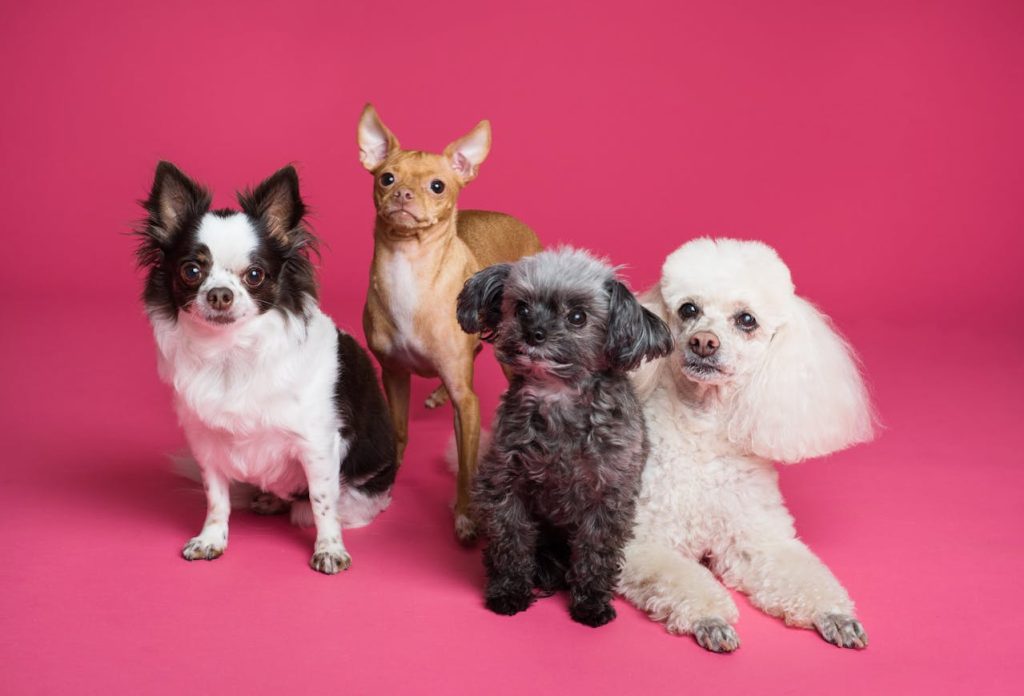
Puppies thrive on predictability, so map out daily activities like feeding, bathroom breaks, and playtime.
Designate specific times for these activities to create a structured environment. Your older dog will benefit from this structure too.
By aligning some of their daily activities, you foster a sense of unity and reduce potential jealousy.
Plan joint activities such as walks and play sessions. This helps the puppy learn from the older dog’s behavior and strengthens their bond. Consistency is key.
Stick to the same feeding times and guarantee both dogs have their own space for eating and resting. This prevents resource guarding and promotes harmony.
Establish a bedtime routine that includes wind-down activities like quiet time or gentle petting to signal it’s time to sleep.
Using Positive Reinforcement
Positive reinforcement is a powerful tool for training your new puppy alongside your older dog.
By using clicker training and effective reward systems, you’ll create a positive learning environment for both dogs.
Start by using a clicker to mark desired behaviors. When your puppy performs a behavior you want to reinforce, such as sitting or coming when called, immediately click and follow up with a treat or praise.
The clicker acts as a clear signal that the behavior was correct.
Your older dog can help demonstrate these behaviors. When your older dog sits on command, click and reward them. The puppy will observe and mimic this behavior, allowing them to learn more quickly.
Consistency is key. Make sure to click and reward every time the puppy exhibits the desired behavior.
Create a structured reward system by using high-value treats that your puppy loves. This helps maintain their interest and motivation.
Always remember to keep training sessions short and engaging to prevent your puppy from getting overwhelmed or bored.
Managing Feeding Times
To manage feeding times effectively, set up separate eating areas to prevent competition and guarantee both dogs eat peacefully.
Establish a consistent feeding schedule to create a sense of routine and security.
This approach helps in maintaining harmony and discipline during mealtimes.
Separate Eating Areas
Designating separate eating areas for your puppy and older dog is vital to prevent food aggression and guarantee peaceful mealtimes.
By doing this, you make certain your puppy’s safety and reduce feeding distractions that might arise if both dogs ate too close to each other.
Here’s how you can effectively manage separate eating areas:
Choose Designated Spots: Select distinct areas in your home where each dog can eat without interference. Make sure these spots are far enough apart to avoid visual and physical confrontations.
This setup helps the older dog feel secure and prevents the puppy from wandering into the established dog’s space.
Trending in Dogs:
Use Barriers if Necessary: If space is limited, consider using barriers like baby gates or crates to create physical separation.
This not only reinforces boundaries but also minimizes the risk of food aggression. Your puppy will learn to eat calmly in their designated area, knowing they’re safe.
Monitor Feeding Times: Supervise the initial feeding sessions to observe any signs of food aggression or discomfort. Praise both dogs for maintaining their boundaries.
This supervision is vital to make certain that both dogs adjust smoothly to their new eating arrangements.
Following these steps will foster a harmonious environment during mealtimes, promoting both puppy safety and stress-free feeding.
Consistent Feeding Schedule
Establishing a consistent feeding schedule guarantees both your puppy and older dog know exactly when to expect their meals. This reduces anxiety and promotes a balanced routine.
Start by determining the appropriate feeding frequency for your puppy, as their nutritional needs differ from those of an adult dog.
Puppies typically require three to four meals a day to support their rapid growth and development. In contrast, an adult dog generally needs only one or two meals daily.
To guarantee ideal puppy nutrition, choose high-quality puppy food formulated specifically to meet their dietary requirements.
Feed your older dog at the same times each day to create a reliable routine. This consistency helps both dogs understand when it’s mealtime and prevents conflicts or competition over food.
Set specific times for feeding and stick to them, even on weekends or holidays. For example, you could feed your dogs at 7 AM, 12 PM, and 6 PM.
Adjust the schedule as your puppy grows, gradually reducing the feeding frequency to match that of your adult dog.
Maintaining this disciplined approach to meal times will make feeding easier and contribute to their overall well-being.
Socializing and Playtime
Introducing your puppy to socializing and playtime with another dog is vital for their development and behavior. Proper social interaction helps your puppy learn important social cues and manners.
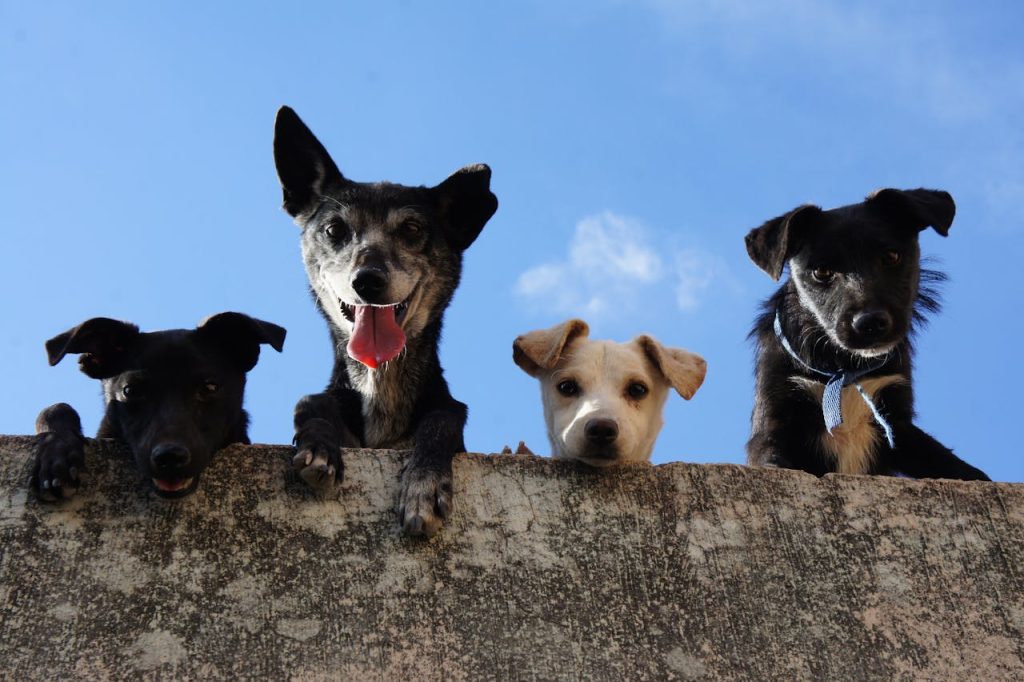
Understanding playtime dynamics will guarantee that both dogs enjoy their time together safely and productively.
- Monitor Initial Interactions: Start by observing how your puppy and the other dog interact. Look for signs of positive social interaction, like wagging tails and play bows. Step in if you notice any signs of aggression or fear, such as growling or cowering.
- Encourage Positive Play: Facilitate activities that promote healthy playtime dynamics. Use toys that both dogs can enjoy, and make sure each dog gets a turn. This helps build trust and teaches your puppy about sharing and taking turns.
- Schedule Regular Playdates: Consistency is key. Arrange regular playdates to strengthen the bond between your puppy and the other dog. This routine helps your puppy become more comfortable with social settings, reducing anxiety and enhancing their social skills.
Addressing Behavioral Issues
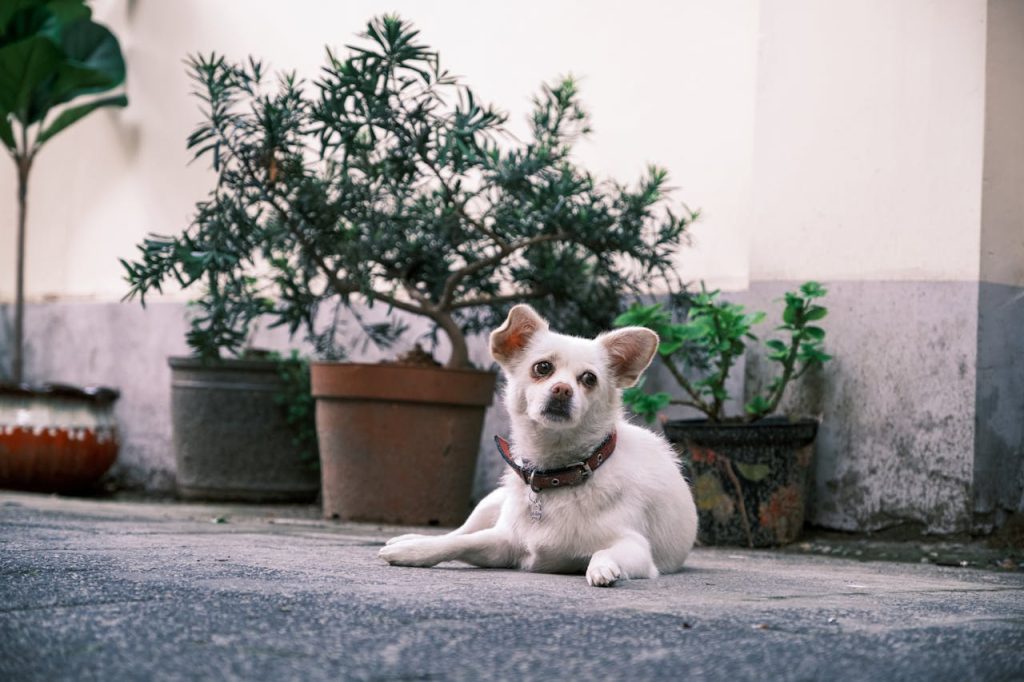
When addressing behavioral issues, start by identifying the specific problem behaviors in both dogs.
Use positive reinforcement techniques to encourage desirable actions, rewarding them consistently.
Maintain a consistent training schedule to guarantee both dogs understand the expectations and boundaries.
Identifying Problem Behaviors

Identifying problem behaviors in your puppy involves observing interactions with your older dog to pinpoint specific issues like aggression, excessive barking, or territorial disputes.
Pay close attention to how the dogs interact during playtime, mealtime, and rest periods.
Recognizing early signs of puppy anxiety or sibling rivalry will help you address these issues effectively.
To identify problem behaviors, follow these steps:
- Monitor their body language: Watch for signs of stress or aggression, such as growling, snapping, or excessive barking. If your puppy seems overly anxious or fearful, it might be due to the presence of the older dog.
- Observe their play: Healthy play should be balanced, with both dogs taking turns in chasing and being chased. If one dog consistently dominates or if play escalates to aggressive behavior, it’s a sign of sibling rivalry.
- Evaluate resource guarding: Notice if either dog becomes possessive over food, toys, or sleeping areas. Territorial disputes can lead to conflicts and stress for both pets.
Positive Reinforcement Techniques
Now that you’ve identified problem behaviors, it’s time to address them using positive reinforcement techniques. Start by implementing a reward system.
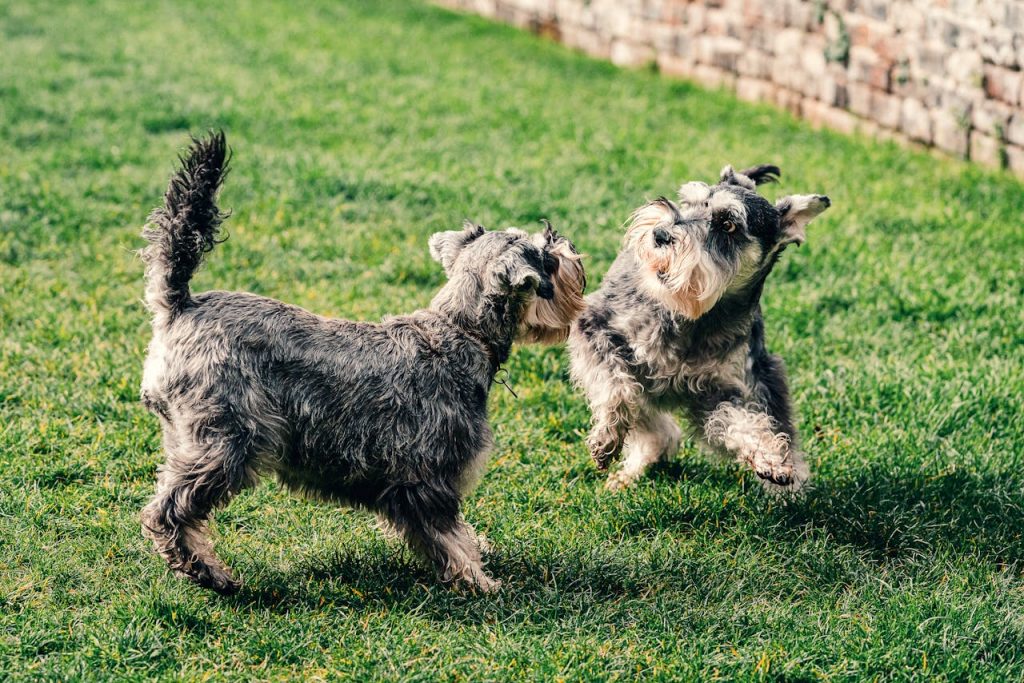
When your puppy behaves correctly, immediately reward them with treats, praise, or playtime.
Use clicker training to mark the exact moment your puppy performs the desired behavior. The clicker sound helps them understand exactly what they’re being rewarded for.
| Behavior | Clicker Training Response | Reward Type |
|---|---|---|
| Sitting calmly | Click when they sit | Treat |
| Not barking | Click for quietness | Praise |
| Ignoring distractions | Click for focus | Playtime |
| Gentle play | Click for soft interactions | Extra petting |
| Coming when called | Click for recall | Favorite toy |
Consistent Training Schedules
Establishing a consistent training schedule is essential for effectively addressing your puppy’s behavioral issues.
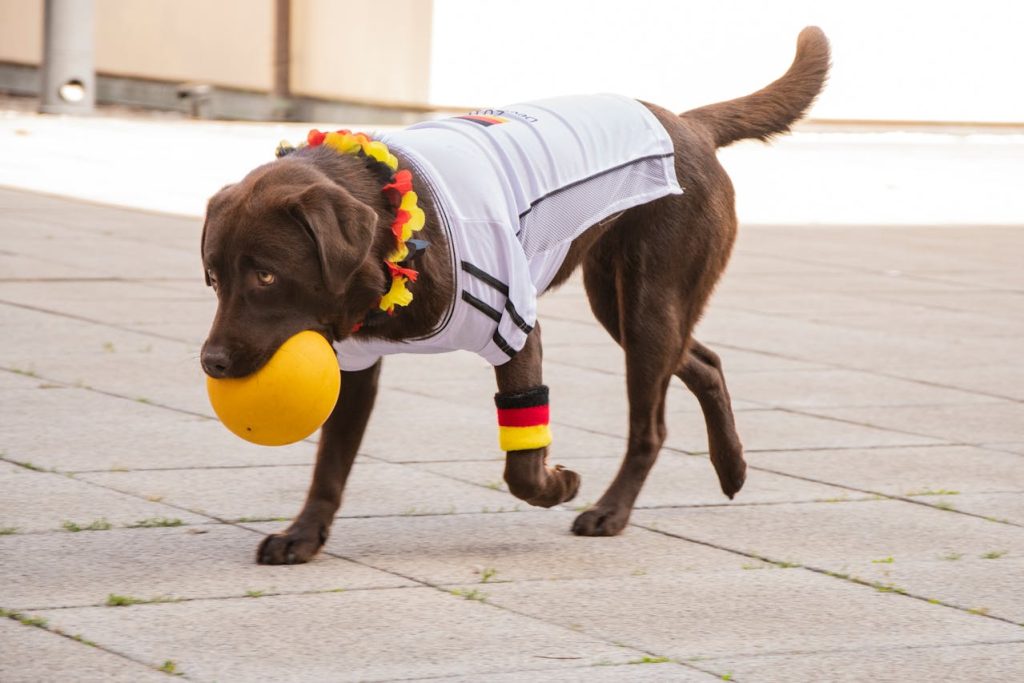
Consistency helps your puppy’s learning process by providing structure and predictability.
When integrating a puppy with another dog, maintaining a regular routine is even more vital to foster positive dog interaction and minimize conflicts.
Here’s a simple guide to help you set up a consistent training schedule:
- Set Regular Training Times: Choose specific times each day for training sessions. This helps your puppy understand when to expect training and reinforces learning patterns. Morning and evening sessions often work best.
- Integrate Play and Socialization: Schedule regular playtimes where your puppy can interact with the older dog. This encourages positive dog interaction and helps the puppy learn proper social behaviors from the older dog.
- Monitor Progress and Adjust: Regularly evaluate your puppy’s progress. If certain behavioral issues persist, adjust your training techniques. Consistency doesn’t mean rigidity; be flexible to meet your puppy’s learning needs.
Monitoring Progress and Adjustments
Regularly tracking your puppy’s progress and making necessary adjustments guarantees a smoother training experience for both your new pup and your current dog.

Start by identifying key puppy milestones such as housebreaking, responding to basic commands, and socializing with your older dog.
Keep a log of these milestones to assess how well your puppy is advancing.
When you notice areas where your puppy struggles, make targeted training adjustments. For instance, if your pup isn’t catching on to a specific command, break it down into smaller steps and practice more frequently.
Similarly, if your older dog seems frustrated or overly dominant during training sessions, consider separating them temporarily to focus on individual training.
Regular monitoring also helps you identify any behavioral issues early on. Watch for signs of aggression, anxiety, or excessive dominance.
Address these issues promptly with appropriate techniques or consult a professional trainer if needed.
Make sure to also reward both dogs for positive interactions and progress.
Frequently Asked Questions
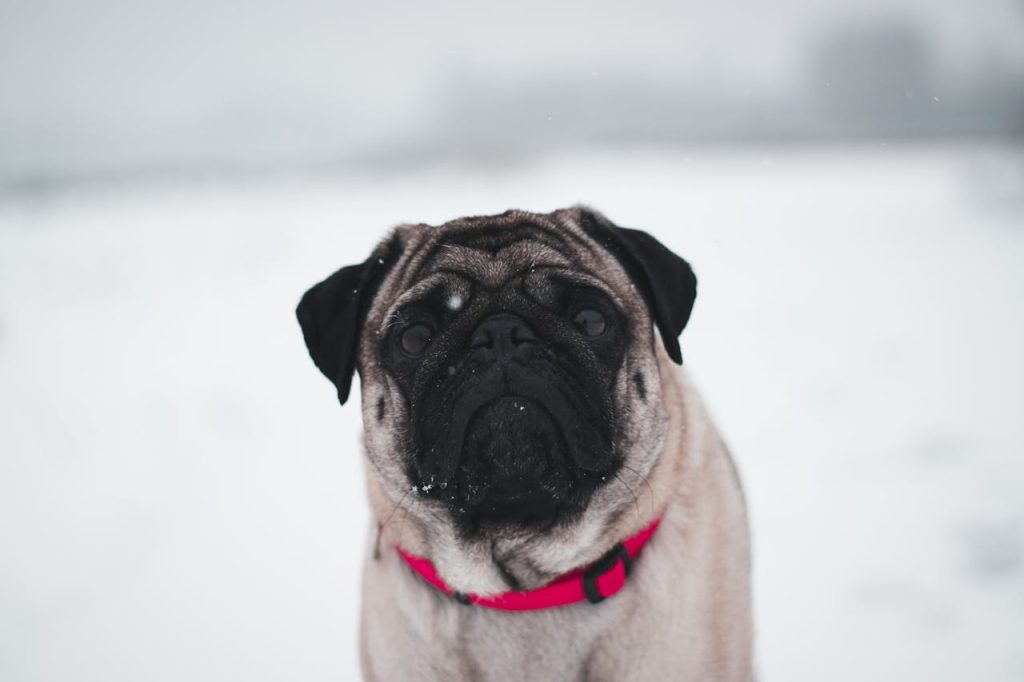
Start by allowing the new puppy to explore separate from the older dog. Gradually introduce them in neutral territory. Monitor older dog behavior closely, rewarding calm interactions. These puppy introduction tips guarantee a smooth change and positive relationship.
Before bringing a new puppy home, make sure you’ve got your puppy proofing essentials and training supplies checklist ready. You’ll need a crate, toys, food, and water bowls. Most importantly, have puppy pads for accidents!
To handle your older dog’s jealous behavior, use positive reinforcement. Reward calm interactions with treats and praise. Gradually introduce the puppy, ensuring your older dog still gets individual attention and affection. This will help to ease jealousy.
Consider choosing interactive toys like tug ropes and treat dispensers. These promote shared activities and stimulate both dogs mentally and physically. You’ll see them bond over these engaging, enjoyable toys designed for dual doggy delight.
Guarantee travel safety by using secure carriers or harnesses for both pets. Maintain their feeding schedule by packing meals and water. frequent stops for bathroom breaks and exercise to keep them comfortable and relaxed.
Conclusion
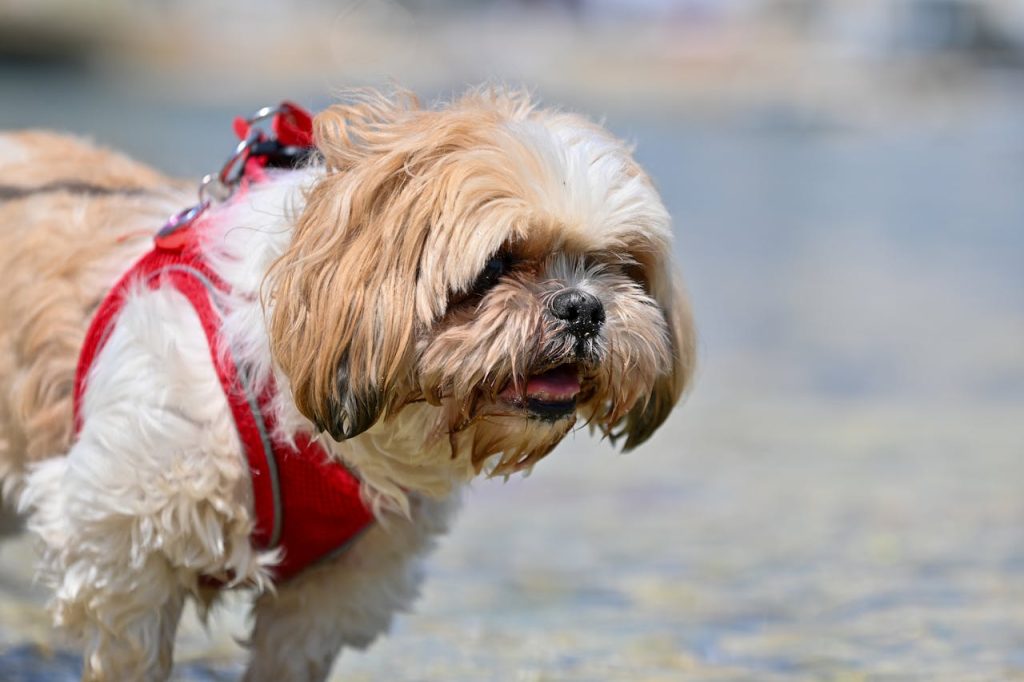
Training a puppy alongside an older dog can seem like a piece of cake if you stick to a consistent routine, use positive reinforcement, and keep a close eye on their behavior.
Don’t forget, socializing and playtime are critical for both dogs.
Address any behavioral issues promptly and adjust your methods as needed.
With patience and persistence, you’ll foster a harmonious relationship between your pets.
Remember, every bit of effort now will pay off in spades later.
